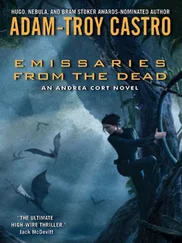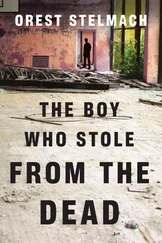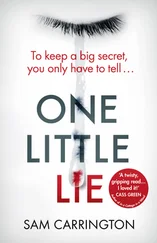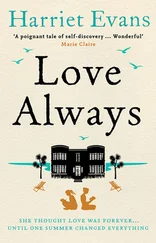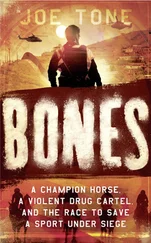Usually, you've got a huge stack of printouts, listing all the missing persons on file who might match your victim. The printout gives each person's name, date of birth, date and place of last contact, race, sex, height, weight, hair color, eye color, and hopefully some unique identifiers-clothing worn when last seen; tattoos; scars; birthmarks; missing limbs or digits; old surgeries or fractures; dentures. If fingerprints are available, you might see them in the form of a computerized code. With luck, you'll find a coded version of a dental chart if the original investigating agency has gone to the trouble to get one; if dental records or x-rays [1]are on file somewhere, the printouts may simply say that they're available. The last thing on the list is the name of the submitting agency. It's up to you to contact them if you want to match your unidentified remains with data from their missing person-dental records, fingerprints, DNA, and so forth.
Of course, sometimes the person you're trying to identify never even made it into the database. If she's a loner, perhaps no one missed her enough to call the police. Or maybe the killer is the only one who knows that a certain woman is missing, and he certainly won't file a report! I could see why it was so hard for Joe to identify a body with no scars, defects, dental work, or dental records on file.
When I'm in Joe's position, I sit in my lab, looking at the huge stack of printouts, the heart-wrenching descriptions of missing children, spouses, friends, and lovers, and I sometimes have to face the fact that none of them matches the one man or woman whose bones lie there in front of me. Even after all these years, I get that familiar sinking feeling-and then, gradually, a growing sense of determination. Something about being up against an obstacle seems to fill me with a quiet resolve not to be defeated by even the most difficult case.
Still, it can get discouraging sometimes, and lots of investigators simply give up if they don't identify the victim after a few days or weeks. In fact, when I first started working as a forensic anthropologist, I was surprised by how easily some investigators would just move on, letting these cases go unsolved as they quickly grow cold. Over the years, though, I've learned that all you can do is your best during the short time that a case is active-but you never really give up the chase. Now I tease all the secrets I can from “my” unidentified remains, and I make sure that the information is circulated to the public and entered into the system. Then I file it away and hope that someday we'll have an answer as new cases start to demand my attention.
No matter what else I'm working on, though, none of my cold cases are ever really abandoned. Whenever I get any information on a possible match for a John or Jane Doe, I always follow up-I couldn't live with myself if I didn't. Sometimes I think that with an ID system as random as this one, it's a wonder that any unknown skeletal remains ever get identified. That's why every single “hit” is such a thrill.
In the end, the Quixote-like nature of our quest may be exactly what keeps me and some of the detectives going. Joe Welsch, for example. Despite his frustration, he was clearly one of these unflagging investigators-he had refused to give up, even in the face of overwhelming odds. He'd joined forces with an equally determined colleague, Special Agent Elizabeth Feagles of the Wisconsin Division of Criminal Investigation-“Liz” to her friends. Together, they'd gone through the usual routine, sorting through the hundreds of missing persons reports, moving from local to state to national cases, but nothing had checked out and they'd run into a wall with the fingerprints, too. They'd gone on to the usual media blitz, bombarding the local news with their best description of Jane Doe-but all they'd gotten for their trouble was a huge stack of false leads.
Three months had passed since the remains had been found, and the killer was still out there. As a last resort, Joe had suggested a facial reconstruction-a clay sculpture representing a forensic artist's rendition of what the victim had looked like. Photographs of the sculpture could then be circulated throughout the state and someone who knew the young woman might recognize her and come forward.
Clay facial reconstructions are always a last-ditch effort-a means of identification employed only when all others have failed. Contrary to popular belief, a facial reconstruction can never be a portrait of the victim, but only, at best, a skillfully rendered approximation. The success of this endeavor is dependent on three things. First, you need a complete and accurate biological profile of the victim. Second, the sculpture must resemble the victim in shape and proportion enough to enable recognition. Third, and most important, someone who knows the victim has to see the reconstruction or a photo made from it. However good the sculpture might be, it does no good at all unless the right person happens to see it.
Joe and Liz were well aware of the difficulties. But what choice did they have? They had to go forward. Then they encountered yet another roadblock.
Usually, a three-dimensional facial reconstruction is built on the skull itself. If some soft tissue still adheres, you actually have to boil the head in a slow cooker-like a Crock-Pot-until the flesh falls away from the bone and you can apply clay directly to the clean, dry contours.
In this case, though, the skull itself couldn't be used. The most critical evidence here was the cut marks, the traces left by the murderer's knife, particularly the marks embedded in the tissue that still clung to the young woman's skull. No one wanted to abandon the possibility that a murder weapon might yet be found to match those marks and the D.A. had insisted that the skull be preserved untouched. But how else could a facial reconstruction be done?
Joe and Liz turned eagerly to the FBI. Surely the forensic specialists at the Bureau, with all their experience, had encountered this problem before? They hadn't. So the investigators contacted Dr. Leslie Eisenberg, a forensic anthropologist and consultant to the medical examiner there in Wisconsin.
Leslie told Joe and Liz about a new technology known as rapid prototyping, a way of creating an exact replica of a human skull without disturbing the head. She also urged them to be cautious. The process was long and complicated, she warned them. It was far from foolproof. And it had never before been employed in the identification phase of a murder case.
Joe and Liz understood that they were breaking new forensic ground. But they'd run out of other options. So they took the now-frozen severed head to their local hospital, where they began the groundbreaking forensic procedure that Leslie had recommended.
First, technicians performed a CT scan on the head, which produced two-dimensional images of the head's structure. Unlike an x-ray, a CT scan can differentiate between skin, muscle, fat, cartilage, bone, and dental components, so it allows the contours of the skull to be clearly delineated.
Then the data identified as “hard tissue” was stored on an ordinary computer diskette, which Joe ferried over to the Milwaukee School of Engineering's Rapid Prototype Center. The engineers there mainly built prototypes of complicated machines and innovative inventions, so this job was something new for them, but they were perfectly capable of using their technology to make an exact scale-model replica of the bones and teeth in Jane Doe's head.
The prototype skull was an amazing piece of work. Made of hundreds of layers of paper that were then laminated with a grayish-brown polyurethane resin, the replica looked exactly like a real skull-until you looked at it up close. Then you could see the layered paper, and the skull resembled a three-dimensional topographical map, a little piece of human geography.
Читать дальше

